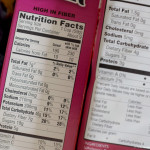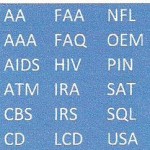Expiry
 You might be surprised to learn that the product-dating routinely found stamped on packaged foods in your local grocery is not required by the feds, or anyone else for that matter, except in the case of infant formulas (it surprised me). After all, every food processer/manufacturer I know of would lead us to believe that they know exactly when it is time to chuck those leftover salad dressings, eggs or baloney and replace it or them with a new package.
You might be surprised to learn that the product-dating routinely found stamped on packaged foods in your local grocery is not required by the feds, or anyone else for that matter, except in the case of infant formulas (it surprised me). After all, every food processer/manufacturer I know of would lead us to believe that they know exactly when it is time to chuck those leftover salad dressings, eggs or baloney and replace it or them with a new package.
It was the General Brewing Company of San Francisco that was reportedly the first producer of a food product to add an “age date” to its containers. They started doing this way back in 1935, specifically, on their “Lucky Lager” beer bottles, in order to let their customers know that it had been properly aged. Apparently, other brewers were inclined to ship their beer to market before it was ready, thus exposing all those, well, “un” lucky lager consumers to green beer. It wasn’t until 1985 that the Boston Beer Company began including a “freshness date” on their Samuel Adams product to make sure it wasn’t too aged. And the rest is marketing history.
 WYSIWYG is the acronym for “what you see is what you get” and comes from the world of information technology. It involves a user interface that allows you to view a document on your computer screen with essentially the same editing and graphics with which it will appear when printed. Wouldn’t it be nice if people had such an interface? That is, some way for you to be assured that the pleasant gentleman you just met at a cocktail party is as he appears and is not secretly a pedophile or a serial killer or something.
WYSIWYG is the acronym for “what you see is what you get” and comes from the world of information technology. It involves a user interface that allows you to view a document on your computer screen with essentially the same editing and graphics with which it will appear when printed. Wouldn’t it be nice if people had such an interface? That is, some way for you to be assured that the pleasant gentleman you just met at a cocktail party is as he appears and is not secretly a pedophile or a serial killer or something.
